AGE: 4 – 5 MONTHS
Introduce
ripe bananas, avocado, papaya, mango, sweet potatoes, and/or yogurt; all foods should be thoroughly mashed or pureed
Amounts
single food per meal, one meal per day; breastfeeding main source of food
AGE: 5 – 6 ½ MONTHS
Introduce
grains (rice, barley, millet), vegetables (peas, lima beans, green beans, squash), more fruits; all foods should be thoroughly mashed
Amounts
one or two foods at a meal, two meals a day, juice for a snack once a day; breastfeeding still major source of food
AGE : 6 ½ – 8 MONTHS
Introduce
egg yolks, stronger vegetables (cabbage, spinach, kale, collard greens)
Amounts
two to three meals a day, or two meals and finger food snacks; breastfeeding at least twice a day
AGE: 8 – 9 MONTHS
Introduce
legumes, nut and seed pastes, and any other vegetables, fruits or grains that have not been introduced previously. Meals can be in a less pureed form, but there should be no large or hard chunks. Finger food can be chunkier.
Amounts
three meals a day plus finger foodsnacks; breastfeeding twice a day, especially if no milk products are being given at meals.
Note: Opinions vary as to when citrus fruits should be introduced; usually somewhere between 7 months and 1 year.
From “Vegetarian Baby,” Yntema, p. 160
The following schedule for introducing solid foods to the breast fed infant has been compiled from many naturopathic physicians who work with infants and children. Most physicians suggest avoiding common allergens such as cow’s milk, wheat, oranges, eggs and chocolate early in the introductory phase (up to the first year). It is best to introduce one food at a time; preferably one every two to four days while observing for reactions: sneezing, runny nose, rash: circumoral or perianal, a change in stool or personality.
Non-allergenic foods should be rotated every five to six days to minimize sensitization which may occur when the same foods are eaten once or twice daily for five to seven consecutive days.
AGE: 6 MONTHS
Introduce
hypoallergenic pureed, mashed foods containing iron
carrots
blackberries
kiwi
zucchini squash
broccoli
yams
sprouts (blended in water)
cauliflower
Jerusalem artichoke
blueberries
prunes
apricots
pears
cherries
banana
grapes
peaches
applesauce
AGE: 9 MONTHS
Introduce
foods high in zinc and good for the immune system
sweet potato
cabbage
oatmeal
papaya
apples
lima beans
string beans
nectarines
potato
black strap molasses
split pea soup
millet
artichoke
peas
basmati rice
AGE: 12 MONTHS
Introduce
foods high in zinc and bulk
acorn squash
barley
chard
yogurt
parsnips
asparagus
avocado
egg yolk
goat’s milk
rice
onions
garlic
spirulina
honey
AGE: 18 MONTHS
Introduce
foods high in B vitamins and calcium
tahini
rutabaga
beans
lamb
green leafy vegetables
buckwheat
fish
eggplant
rye
chicken
beets
kelp
AGE: 21 MONTHS
Introduce
foods high in protein
egg
almond butter
wheat
turkey
cashew butter
brewer’s yeast
beef’s liver
pineapple
walnuts
cow’s milk
oranges
lentils
AGE: 2-3 YEARS
Introduce
foods high in protein
sunflower seeds
cottage cheese
peanut butter
clams


